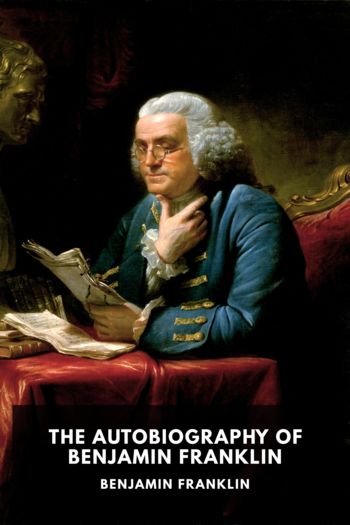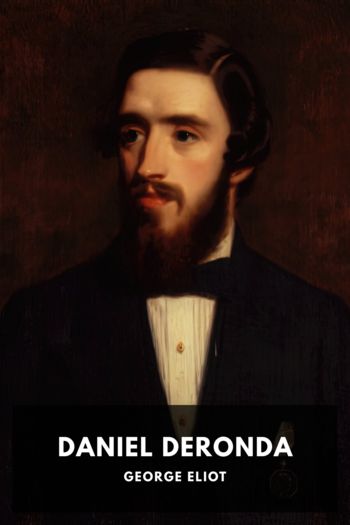How Soccer Explains the World: An Unlikely Theory of Globalization, Franklin Foer [reading eggs books txt] 📗

- Author: Franklin Foer
Book online «How Soccer Explains the World: An Unlikely Theory of Globalization, Franklin Foer [reading eggs books txt] 📗». Author Franklin Foer
But, based on their behavior and looks, these characters didn’t appear to be active goons. In fact, they didn’t seem like they had often risen from their couches, let alone recently kneed violent sociopaths in the testicles.
I told Alan that I had spotted fans of Manchester City, that weekend’s opposing club, at a pub down the street. “They were just sitting outside drinking. Are they allowed to do that? Will nobody give them a hard time?” I described the facade of the pub to Alan.
“That’s a Chelsea pub,” he told me.
He turned away and told one of his friends, “Frank HOW SOCCER EXPLAINS THE SENTIMENTAL HOOLIGAN
says that there were City fans down the street. They were in a Chelsea pub. That’s not right.” His tone was outrage.
His friend looked up from his table at me. He had been collecting cash from friends to rent a van that would travel to Liverpool for next week’s game. “Alan would still have a go. If Tottenham were here, he might even throw a punch.” He rolled his eyes. Besides, even if they weren’t too old to do it, they still wouldn’t be crazy enough to put themselves in that kind of situation, fighting so close to the stadium. That style of battle is a distant memory. Too many police hover outside the pubs.
Alan and I walked across the room to Angus and his daughter. Angus was now a bit drunk and the bar’s bouncer was trying to steer him into a seat, where he wouldn’t stumble into the path of waiters.
Angus began telling a story about traveling to Nottingham Forest, “It was just the two of us and two of them. The police saw us coming up against one
another. And they thought it was funny. They were laughing their fuckin’ asses o¤. They just let us have a go at one another. Of course, this guy here,” he pointed to Alan. “He got to go against the little twat. I took this enormous bloke.” He mimed a man flexing his muscles. “I jumped on ’im and bit his ear o¤.”
He turned to his daughter, doubled over in laughter, and then finished telling his tale.
“Them were the days,” Alan said. And so they went on, rendering each story with manic intensity and scenes of incredible drama.
A few minutes later we began to walk to the game with the crowd. As we went down an escalator, Alan pulled up his pants leg to reveal a cowboy boot with a steel tip. “Good for giving a kicking.”
As he disembarked, sloppy drunk Angus leaned
over to me and whispered, “But when was the last time they were used for kicking?” i
H o w S o c c e r E x p l a i n s
the Survival of the Top Hats
I.
When players score goals at Rio’s São Januário stadium, they have visions of the crucifixion. Less than twenty yards behind the goalkeeper’s net, a dark wooden cross bulges forth from the stained glass of a mid-century-modernist chapel, Our Lady of Victories. A few yards to the left, in the sight line of corner kicks, a small garden is filled with pedestals displaying concrete statuettes of the Madonna and other icons. This is how the world expects the game to be played in Brazil, the cradle of soccer civilization: transcendently.
São Januário belongs to the club Vasco da Gama, and the stadium is itself a shrine to Brazilian soccer.
Throughout the club’s storied history, its players have perfectly embodied Rio de Janeiro’s Dionysian temperament—like Romario, the star of the 1994 World Cup.
He compensates for his undisguised distaste for running with his gift for deception. Long ago, every Rio journalist tells me, his coaches stopped pleading with him to leave the beach, to come away from his bar, and join the squad on the training ground.
In 2002, Romario ditched Vasco for a cross-town rival. Since his departure, the most iconic figure at São Januário is no longer a player. You can see his visage just above Our Lady of Victories, on a large billboard that hangs from a tower adjoining the field. It’s the unsmiling face of a balding, gray-haired, multichinned man with sizeable gold-rimmed glasses. His name is Eurico Miranda, a federal congressman and the president of Vasco da Gama. The billboard trumpets him as a “symbol of resistance.” When I visit São Januário, the symbol is everywhere. Signs for his reelection—“a voice against the powerful”— ring the outside of the stadium. Across the street from São Januário’s main gate, a Ford Escort with a loudspeaker mounted on its roof plays a samba tune that proclaims, “Eurico is the candidate of the poor people.” Entering the stadium, an unavoidable banner in midfield exclaims, “Passion for Vasco, Devotion to Eurico.”
Americans call their sporting teams “franchises.”
Brazilians would never tolerate that use of the term. It has too many commercial associations with chains of McDonald’s and dry cleaners. Instead, Brazilians call their teams “clubs,” because most are actually clubs.
They have swimming pools, restaurants, tennis courts, palm-covered gardens, and dues-paying members—
places for the middle class to spend a Saturday afternoon. Even though the clubs pay their players, they have retained their status as nonprofit amateur enter-HOW SOCCER EXPLAINS THE SURVIVAL OF THE TOP HATS
prises. This means that their finances are not subjected to public scrutiny; their executives have no legal accountability. In short, their management ranks make the perfect refuge for scoundrels. These scoundrels have grown so integral to the Brazilian game that everyone calls them by their nickname, the cartolas, the top hats. As part of the amateur structure of the game, the cartolas usually receive no salary. They supposedly toil for their gentlemanly love of their club. In practice, however, the cartolas reward





Comments (0)